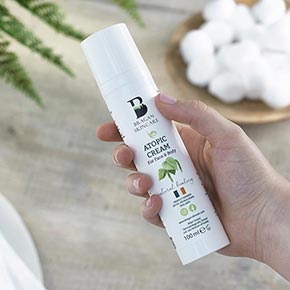Effective Seborrheic Dermatitis Treatment for the Face: A Complete Guide
Seborrheic Dermatitis on the Face: Causes, Symptoms & Treatment
Seborrheic Dermatitis Treatment : Seborrheic dermatitis on the face is not just a cosmetic concern; it’s a condition that can disrupt confidence and daily life. Characterised by redness, itching, and flaking, it often leaves sufferers searching for reliable solutions. Effective treatments are essential to restore skin health and provide relief.
Snail mucin, a natural remedy trusted for centuries, plays a key role in managing dermatitis. Rich in glycoproteins, hyaluronic acid, and glycolic acid, it promotes hydration, reduces inflammation, and aids skin repair. Products like Bragan Skincare’s Atopic Cream combine the power of snail mucin with advanced formulations, offering a modern solution rooted in tradition.
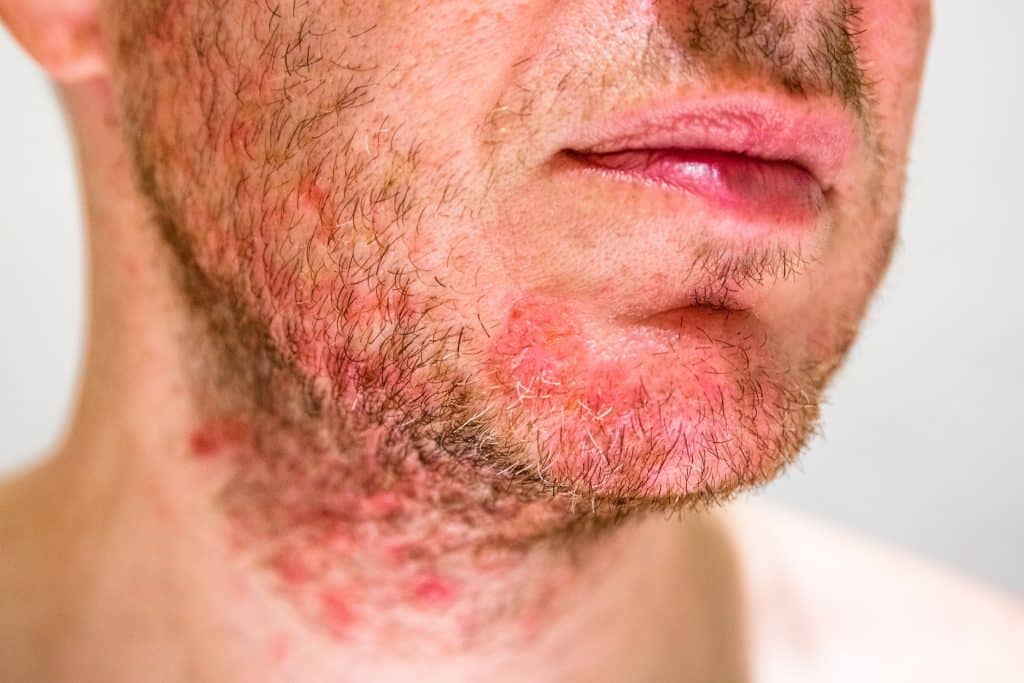
Understanding Seborrheic Dermatitis
Seborrheic dermatitis is a common but often misunderstood skin condition. It primarily affects areas rich in oil glands, including the face, scalp, and chest. For those dealing with it on the face, finding an effective treatment is essential for both comfort and confidence. This condition goes beyond just dry skin—understanding its causes and symptoms is key to managing it effectively.
Causes of Seborrheic Dermatitis
Seborrheic dermatitis does not have a single cause. Instead, it arises from a combination of factors—some environmental and others biological. Knowing these triggers can help you avoid flare-ups:
- Weather Changes: Cold, dry winters and hot, humid summers can both aggravate symptoms. Think of it as your skin’s way of reacting to sudden shifts in its environment.
- Stress: High-stress levels don’t just impact your mind; they can weaken the skin barrier. Stress triggers inflammation, which worsens seborrheic dermatitis.
- Yeast Overgrowth: A type of yeast called Malassezia thrives on the natural oils in your skin. For some, this leads to irritation and scaling.
- Skin Type and Genetics: If you have naturally oily skin or a family history of the condition, you’re more prone to it.
Understanding these common triggers can significantly improve the management of seborrhoeic dermatitis. Adopting gentle skincare solutions like Bragan Skincare’s Atopic Cream is especially beneficial as it’s formulated to restore balance and calm the skin.

Symptoms of Seborrheic Dermatitis
Seborrheic dermatitis doesn’t just manifest as flaky skin; it is more complex. Recognising these symptoms can help you identify and treat it effectively:
- Redness and Inflammation: A hallmark of the condition, redness often appears in patches on areas like the cheeks, nose, or forehead.
- Flaking or Scaling: The most common symptom, these flakes may range from white and fine to yellow and greasy.
- Itching: Persistent itching is not just uncomfortable; it can also lead to secondary infections if the skin is broken from scratching.
- Greasy Skin Appearance: Particularly in cases involving Malassezia, the skin can appear shiny or over-oily.
- Burning Sensation: Some individuals experience a mild burning or stinging feeling in affected areas.
The symptoms are frustrating, but they are manageable with targeted treatments. Snail mucin, a core ingredient in Bragan Skincare’s Atopic Cream, helps address many of these. Packed with hyaluronic acid and glycoproteins, snail mucin combats inflammation while hydrating and soothing the skin.
By addressing both the visible symptoms and the underlying triggers, your skin can return to its healthiest state. Carefully formulated products, when part of a routine, can make a real difference to anyone dealing with this condition.
Traditional Treatments That Work
Seborrheic dermatitis is often managed effectively with tried-and-tested treatments. From topical applications to lifestyle adjustments, traditional methods aim to reduce symptoms and improve skin health. Whether you’re exploring over-the-counter remedies or prescription solutions, understanding these approaches can help you make informed decisions about your care.
Topical Treatments
Topical treatments remain a cornerstone in managing seborrheic dermatitis. Their goal is to reduce inflammation and control yeast overgrowth that can trigger flare-ups.
- Antifungal Creams: These target Malassezia, the yeast associated with seborrheic dermatitis. Common antifungal ingredients include ketoconazole and clotrimazole, which help decrease scaling and redness.
- Corticosteroids: Used for short-term relief, corticosteroids like hydrocortisone effectively reduce inflammation and itching. However, long-term use is not advised as it can thin the skin.
These treatments, when applied consistently, can significantly reduce discomfort and visible symptoms. Pairing them with moisturisers like Bragan Skincare’s Atopic Cream enhances hydration, which is essential for symptom relief.
Medicated Shampoos
Shampoos formulated with specific active ingredients can help manage seborrheic dermatitis when it affects the scalp or hairline.
- Selenium Sulphide: Known for its antifungal properties, selenium sulphide reduces flaking and soothes irritation.
- Zinc Pyrithione: This combats yeast activity while also calming inflammation, making it a dual-action solution for scalp flare-ups.
Using medicated shampoos a few times a week can minimise scaling and redness. If seborrheic dermatitis creeps onto your face, consider carefully using these shampoos as a face wash for short-term management.
Lifestyle Changes
Traditional treatments work best when supported by practical lifestyle adjustments. These simple changes can complement your skincare routine:
- Stay Hydrated: Drinking plenty of water keeps your skin nourished from within.
- Manage Stress: Stress can exacerbate symptoms. Incorporate activities like meditation or daily walks to relax.
- Avoid Harsh Skincare Products: Choose gentle, fragrance-free cleansers and moisturisers to prevent irritation.
- Stick to a Routine: Consistency is key. Regularly using products like Bragan Skincare’s Atopic Cream can help keep symptoms at bay.
By combining traditional methods with modern skincare innovations, you can better manage seborrheic dermatitis and improve the health of your skin. Each step not only addresses symptoms but also supports long-term wellness.
Snail Mucin: Benefits for Facial Seborrheic Dermatitis
Snail mucin, long regarded as a treasure in skincare, has emerged as a key ingredient in treating seborrheic dermatitis. Packed with beneficial compounds like glycoproteins, hyaluronic acid, and glycolic acid, it offers unparalleled hydration, promotes skin repair, and reduces inflammation. Its compatibility with sensitive skin types makes it particularly effective for soothing the redness and flaking associated with seborrheic dermatitis.
History of Snail Mucin
Snail mucin has been used medicinally for centuries, dating back to ancient Greece. Physicians like Hippocrates recommended snail-based remedies for inflammation and skin injuries. In more recent times, snail farmers in Chile noticed that their hands became softer and cuts healed faster after handling snails. This inspired the incorporation of snail mucin into skincare in the 20th century.
Today, research confirms its benefits for various skin conditions, including psoriasis and dermatitis. Its restorative properties make it a powerful, natural alternative to synthetic ingredients. Modern formulations, like Bragan Skincare’s Atopic Cream, integrate this ancient knowledge with state-of-the-art science to effectively treat seborrhoeic dermatitis on the face.
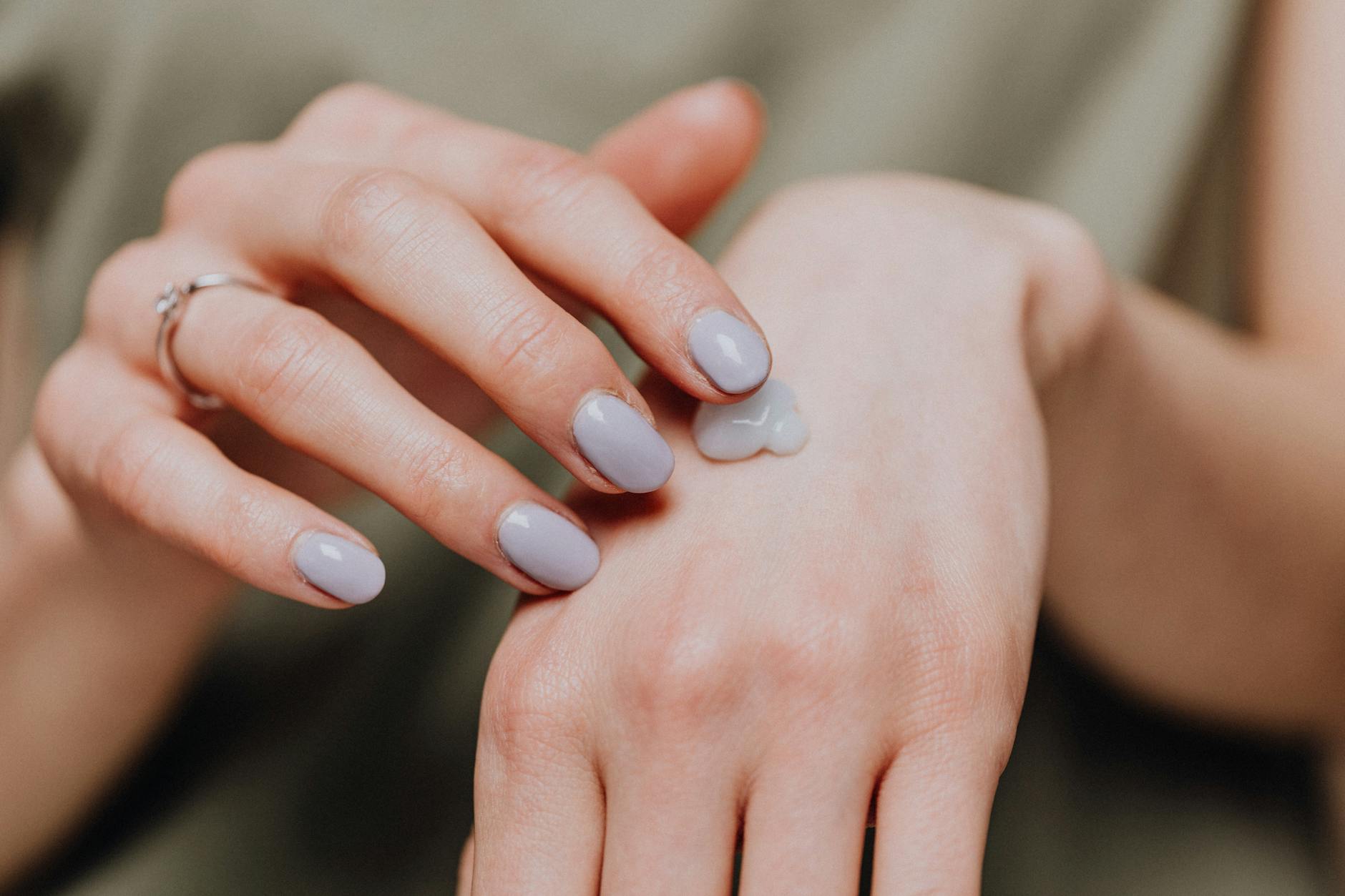
Components of Snail Mucin
Snail mucin’s efficacy lies in its rich composition. Each compound plays a pivotal role in skin health.
- Glycoproteins: These strengthen the skin barrier, locking in moisture and enhancing resilience.
- Hyaluronic Acid: Known for its deep hydration, it keeps skin supple and reduces dryness-induced irritation.
- Glycolic Acid: A natural exfoliant that gently removes dead skin cells, promoting smoother, healthier skin.
- Allantoin: Soothes inflammation and accelerates cell regeneration. It’s a critical compound for wound healing.
- Peptides: Boost collagen and elastin production, improving skin elasticity and reducing redness.
These potent elements work in tandem to hydrate, repair, and calm irritated skin, making snail mucin a versatile solution for conditions like seborrheic dermatitis.
Applying Snail Mucin for Seborrheic Dermatitis
To maximise its benefits, proper application of snail mucin products is crucial. Here’s how you can use it effectively:
- Cleanse Gently: Begin with a mild, fragrance-free cleanser to avoid further irritation.
- Apply a Thin Layer: Use a pea-sized amount of snail mucin cream or serum, focusing on affected areas. Products like Bragan Skincare’s Atopic Cream work well for this.
- Follow with Moisturiser: Seal in the benefits by layering a soothing moisturiser over the snail mucin.
- Use Consistently: Incorporate snail mucin into your routine twice daily—morning and night—for best results.
By following these steps, you can reduce the redness and flaking caused by seborrheic dermatitis, while restoring your skin’s natural glow. Combining snail mucin with other nourishing ingredients ensures a balanced approach that targets both symptoms and triggers effectively.
Why Choose Bragan Skincare Atopic Cream
When it comes to treating seborrheic dermatitis on the face, finding a blend of natural and effective ingredients is key. Bragan Skincare’s Atopic Cream stands out in the crowded market due to its scientifically-backed formulation, designed specifically to soothe and repair irritated skin. Let’s break down what makes this cream an exceptional choice for your skincare routine.
Natural Ingredients with Proven Benefits
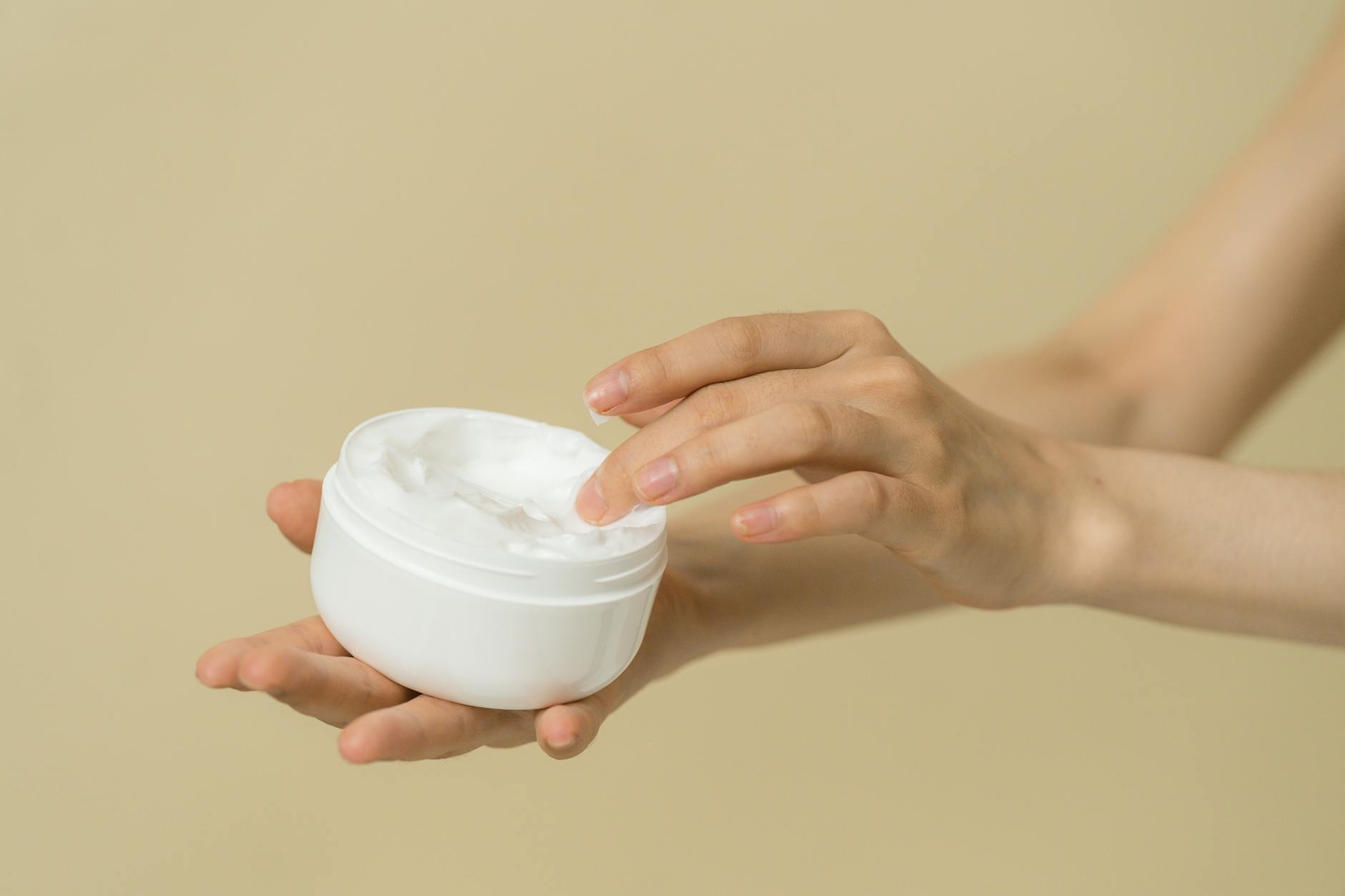
A key feature of Bragan Skincare’s Atopic Cream is its reliance on snail mucin, a natural skincare solution celebrated for centuries. Snail mucin is not just another skincare trend—it’s a powerhouse ingredient rich in:
- Hyaluronic Acid, which profoundly hydrates the skin and prevents dryness-related irritation.
- Allantoin, soothing inflammation and promoting faster healing of damaged skin.
- Peptides, improving skin elasticity while reducing redness and irritation.
- Glycolic Acid, gently exfoliating and removing dead skin cells while keeping the skin smooth.
This unique blend restores balance to compromised skin while protecting it from further flare-ups. Regular use can significantly improve visible redness, flaking, and discomfort.
Scientifically-Formulated for Sensitive Skin
Unlike many products that risk irritating already-inflamed skin, Bragan Skincare’s Atopic Cream is carefully formulated to meet the needs of sensitive skin. Its soothing components target the root causes of seborrheic dermatitis, reducing symptoms like redness, itching, and scaling. This makes it an ideal product to pair with other seborrheic dermatitis treatments. For more details, read the Complete Guide to Seborrheic Dermatitis Cream.
Deeply Hydrating Without Clogging Pores
Seborrheic dermatitis often leaves your skin severely dehydrated. Bragan Skincare’s Atopic Cream delivers deep, long-lasting hydration, locking in moisture without clogging pores. This is particularly important for anyone prone to excess oil production, as clogged pores can worsen symptoms.
The cream absorbs quickly, leaving no residue behind, making it perfect for daily use under makeup or sunscreen. Plus, its lightweight formula ensures you won’t feel greasy, even after multiple applications.
A Tradition of Skin Healing: Seborrheic Dermatitis Treatment
Snail mucin has been used for hundreds of years to treat a range of skin conditions, including dermatitis. Ancient remedies demonstrate their suitability for soothing inflamed and irritated skin. Today, Bragan Skincare combines this age-old ingredient with modern science, creating an advanced formulation for seborrheic dermatitis treatment on the face. Explore more incredible benefits of this formulation at Best Cream for Seborrheic Dermatitis.
Bragan Skincare’s Atopic Cream embodies the perfect marriage of tradition and innovation. It’s not just a remedy—it’s a solution designed with your skin’s unique needs in mind, ensuring relief and rejuvenation.
Self-Care Routine for Sensitive, Flaky Skin
Managing seborrheic dermatitis on the face doesn’t have to be overwhelming. Maintaining a consistent routine and understanding when to seek expert advice can significantly improve outcomes. Here are effective self-care strategies to improve the comfort and appearance of your skin.
Daily Skincare Routine: Suggest a Routine That Incorporates Gentle Cleansing and Moisturising
A well-thought-out daily routine is crucial for managing seborrheic dermatitis. Consistency will help minimise flare-ups and keep your skin feeling soothed and hydrated.
- Start with a Gentle Cleanser: Use a mild, fragrance-free cleanser to avoid irritation. Harsh soaps strip away natural moisture, making the skin more vulnerable to flaking and redness.
- Incorporate Lukewarm Water: Always wash with lukewarm water instead of hot. Hot water can exacerbate irritation and dryness.
- Moisturise Immediately: Apply a hydrating, non-comedogenic moisturiser while your skin is still damp. Opt for products formulated for sensitive skin, like Bragan Skincare’s Atopic Cream. This helps lock in moisture and reduces inflammation.
- Avoid Scrubbing: Be gentle. Scrubbing inflamed areas can worsen the condition.
- Protect with Sunscreen: Use a broad-spectrum, mineral-based sunscreen daily to shield your skin and prevent further irritation.
Stick to this simple regimen, and your skin will thank you. Avoid overloading your routine with too many products, as this can often lead to further irritation.
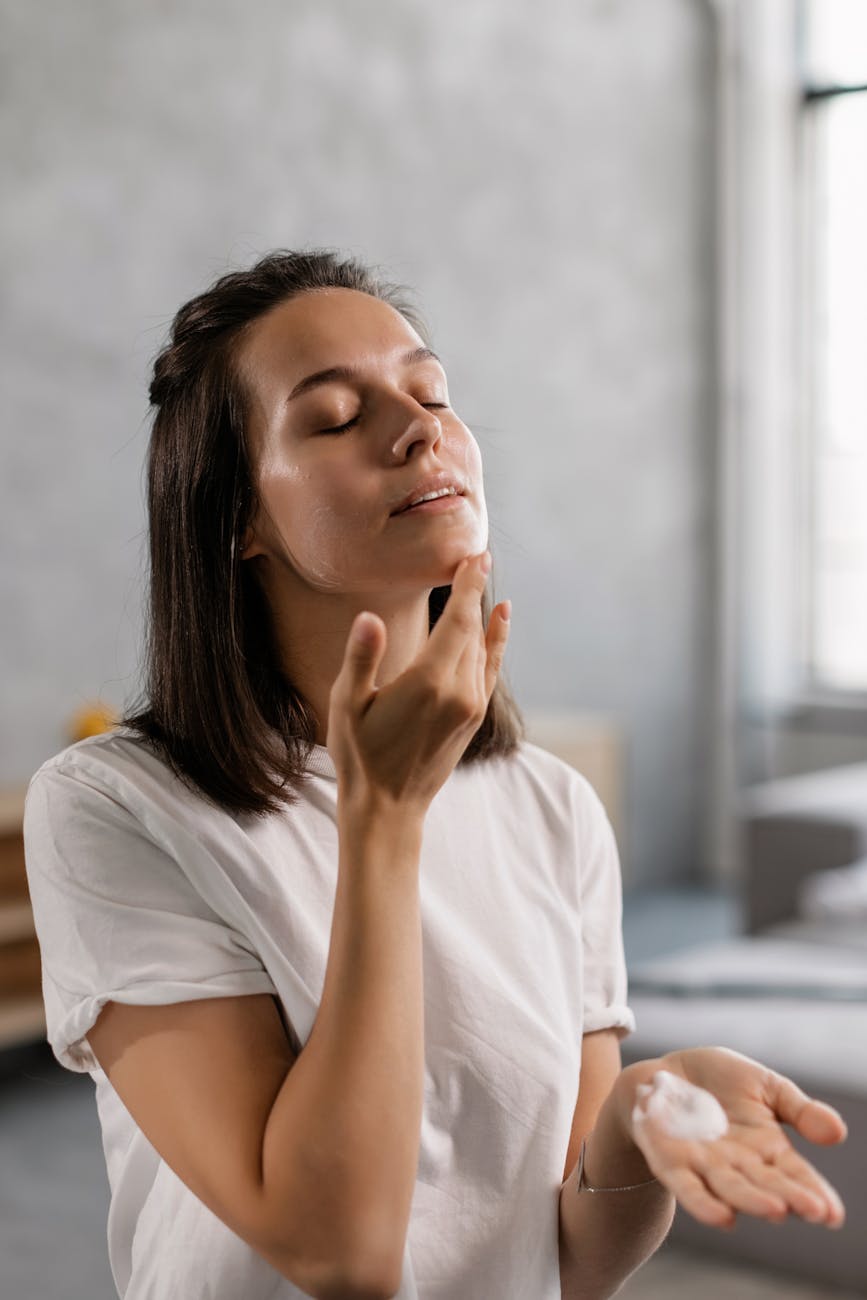
When to See a Dermatologist
Sometimes self-care isn’t enough, and professional help becomes necessary. If you notice any of the following signs, it’s time to consult a dermatologist:
- Persistent Symptoms: If redness, scaling, or itching persists despite consistent self-care efforts.
- Spreading Lesions: When patches extend to new areas or worsen over time, this is a sign that prescription treatment may be needed.
- Infection Indicators: Symptoms like oozing, crusting, or excessive pain could signal a secondary infection requiring medical attention.
- Failed Over-the-Counter Treatments: If traditional remedies and products don’t seem effective, stronger formulations may be required.
- Impact on Mental Well-Being: Seborrheic dermatitis can take an emotional toll. If it’s affecting your confidence or daily life, a professional can provide both medical and psychological support.
Professional treatments often include topical antifungals, prescription-strength creams, or tailored advice that complements your skincare routine. By combining medical insights with products like Bragan Skincare’s Atopic Cream, you can tackle seborrheic dermatitis effectively.
Conclusion & Next Steps
Effectively treating seborrheic dermatitis on the face requires a tailored approach that addresses both symptoms and underlying causes. Combining natural remedies with evidence-based skincare can significantly improve skin health.
Snail mucin stands out as a highly effective solution, offering deep hydration, reducing inflammation, and promoting skin repair. Products like Bragan Skincare’s Atopic Cream merge tradition with scientific innovation, providing targeted relief for irritated skin.
Consistent use of these proven treatments, alongside simple lifestyle adjustments, can restore your skin’s natural balance and ensure long-term comfort.
Additional Resources: Seborrheic Dermatitis Treatment Face
Navigating seborrheic dermatitis treatment for the face can be challenging, especially when looking for deeper insights or complementary advice. Below are curated resources, both internal and external, to help you further understand treatment options and strategies.
Further Reading Links
Expanding your knowledge is vital for effective management. Here’s a list of trusted resources for seborrheic dermatitis treatment:
Internal Resource
- For a complete overview of treating seborrheic dermatitis with natural remedies, explore Bragan Skincare’s Atopic Cream. This page offers insights into why snail mucin is a standout ingredient for sensitive skin conditions.
External Resources
- Seborrheic Dermatitis – Diagnosis and Treatment (Mayo Clinic): Learn about medical treatment options, including managing symptoms with medicated creams and lifestyle changes.
- Diagnosis and Treatment of Seborrheic Dermatitis (AAFP): A detailed article highlighting the role of antifungal treatments in managing this condition.
- Seborrhoeic Dermatitis in Adults (Eczema.org): Offers practical advice, including the use of mild topical steroids for short-term symptom control.
- Seborrheic Dermatitis: Natural Treatments (Healthline): Discusses natural remedies like fish oil supplements and their positive impact on dermatitis.
- Seborrheic Dermatitis – Causes and Treatments (Mount Sinai): Detailed guidance on clinical treatment approaches, from antifungal creams to medicated shampoos.
These resources offer a comprehensive view of seborrheic dermatitis treatment options, helping you make informed decisions tailored to your needs.
Atopic Skin Repair Cream
Bragan Skincare Snail Mucin Atopic Cream At Bragan Skincare, we believe in doing things differently. Our Snail Mucin Atopic Cream isn’t just another product on the shelf—it’s a promise to your skin. Powered by the unmatched healing properties of pure snail mucin, this cream is specially crafted to soothe redness, calm irritation, and restore balance to even the most sensitive skin. Perfect for those suffering with Eczema, Psoriasis. Dermatitis and many other skin condition. Why snail mucin? Because it works. Packed with naturally occurring allantoin, glycolic acid, and peptides, it’s a game-changer for reducing redness, promoting repair, and deeply hydrating…
Is seborrheic dermatitis contagious?
No. Seborrheic dermatitis is an inflammatory skin condition linked to an over-response to Malassezia yeast, skin oils, genetics, and environmental factors. It does not spread from person to person.
Can I use dandruff shampoo on my face?
In short, yes—briefly and carefully. A short-contact wash with a shampoo containing zinc pyrithione, selenium sulphide, or ketoconazole 2–3 times per week can help. Apply to damp skin for 30–60 seconds, avoid the eyes, rinse well, then moisturise. Stop if irritation occurs and seek professional advice if symptoms persist.
What triggers facial flare-ups?
Common triggers include stress, sudden weather shifts, harsh or fragranced skincare, over-cleansing, heavy occlusive cosmetics, illness, and hormonal changes. Identifying and limiting personal triggers helps reduce recurrences.
How long until I see improvement?
Many people notice improvement within 1–4 weeks with a consistent routine: gentle cleansing, targeted short-contact antifungal use when needed, a soothing moisturiser, and daily sunscreen. If symptoms persist after 4–6 weeks, consult a healthcare professional.
Can snail mucin help seborrheic dermatitis on the face?
Snail mucin can support hydration, soothe irritation, and reinforce the skin barrier, which may improve comfort during flare-ups. It is not a prescription treatment or cure—use alongside medically recommended therapies and patch test first.
What daily routine works best?
Morning: cleanse gently, apply a calming moisturiser, finish with broad-spectrum mineral sunscreen. Evening: cleanse, optionally use a short-contact antifungal on flare areas (as advised), then moisturise. Avoid scrubs and fragrance, and keep the routine simple and consistent.
Featured Bragan Skincare Products
-
€39.99 – €100.00Price range: €39.99 through €100.00Select options This product has multiple variants. The options may be chosen on the product page
-
€100.00Select options This product has multiple variants. The options may be chosen on the product page

